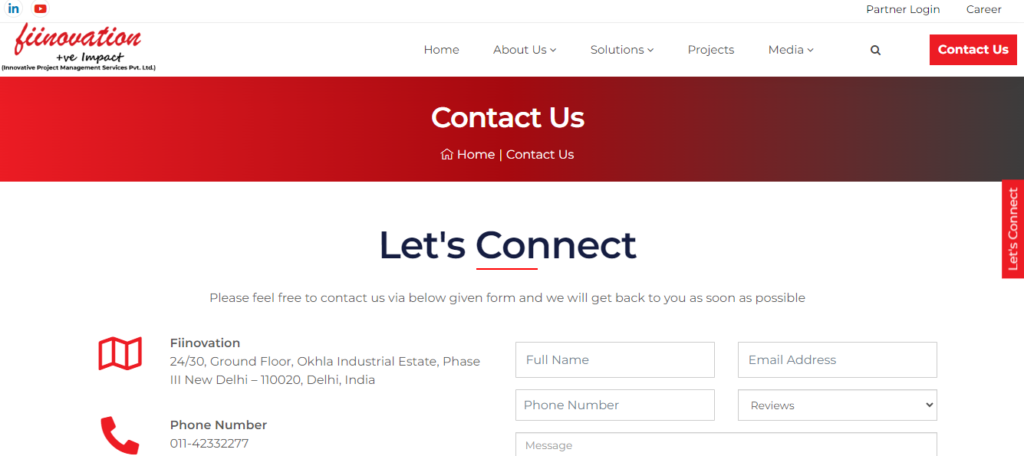In the ever-evolving landscape of education, the importance of effective scholarship management cannot be overstated. Institutions and organizations responsible for administering scholarships are increasingly turning to advanced technologies to streamline processes, improve efficiency, and enhance the overall experience for both administrators and applicants. This comprehensive guide aims to provide insights into the critical considerations when choosing scholarship management systems, offering a roadmap for educational institutions seeking the right solution for their unique needs.
Understanding the Need for Scholarship Management Systems:
Before delving into the intricacies of selecting the right system, it’s crucial to understand the fundamental purpose of scholarship management systems. These dedicated platforms are designed to automate and simplify the entire scholarship lifecycle – from application and evaluation to award distribution and reporting. By digitizing these processes, institutions can eliminate manual tasks, reduce errors, and ensure a more transparent and equitable distribution of scholarship opportunities.
Key Features to Look for in Scholarship Management Systems:
When embarking on the journey of selecting a scholarship management system, institutions must consider a range of features that align with their specific requirements.
Centralized Application Management: A robust system should offer a centralized platform for managing scholarship applications. This includes easy application submission, document uploads, and tracking of application statuses.
Automated Evaluation Processes: Look for systems that incorporate automated evaluation tools. These tools can include scoring mechanisms, eligibility checks, and predefined criteria to streamline the evaluation process and ensure fairness.
Integration Capabilities: Compatibility with existing systems is crucial. The chosen scholarship management system should seamlessly integrate with other software used by the institution, such as student information systems (SIS) or financial aid platforms.
Customization Options: Institutions have unique scholarship structures and requirements. A flexible system that allows for customization of forms, criteria, and workflows ensures that the system aligns with the institution’s specific needs.
User-Friendly Interface: A user-friendly interface is essential for both administrators and applicants. Intuitive navigation and clear instructions contribute to a positive user experience, reducing the learning curve for all stakeholders.
Communication Tools: Effective communication is vital throughout the scholarship process. The system should have built-in communication tools, such as email notifications and alerts, to keep applicants, evaluators, and administrators informed at each stage.
Data Security Measures: Given the sensitive nature of scholarship data, robust security measures are paramount. The chosen system should adhere to industry standards for data encryption, access controls, and regular security updates.
Scalability and Future-Proofing: Institutions should select a system that can grow with their needs. Scalability ensures that the system remains effective as scholarship programs expand, and technological advancements occur.
Reporting and Analytics: Comprehensive reporting capabilities are essential for assessing the effectiveness of scholarship programs. The system should provide administrators with access to meaningful data and analytics to inform decision-making.
Benefits of Implementing Scholarship Management Systems:
Implementing a robust scholarship management system brings forth a myriad of benefits for educational institutions.
Efficiency Gains: Automation reduces the time and effort spent on manual tasks, allowing administrators to focus on strategic decision-making rather than routine administrative processes.
Enhanced Transparency: Scholarship management systems contribute to a transparent and equitable distribution of scholarships. Applicants can track the progress of their applications, and administrators can ensure a fair evaluation process.
Improved Communication: The built-in communication tools facilitate seamless communication between administrators, evaluators, and applicants. Automated notifications keep all stakeholders informed, reducing the need for manual follow-ups.
Data-Driven Decision-Making: Robust reporting and analytics empower institutions to make data-driven decisions. By analyzing trends and outcomes, administrators can continually refine and optimize their scholarship programs.
Scalability and Adaptability: A scalable system accommodates the growth of scholarship programs. Institutions can adapt to changing needs, embrace new opportunities, and stay at the forefront of scholarship administration.
Enhanced Compliance: Scholarship management systems that integrate with existing systems contribute to enhanced compliance with institutional policies and external regulations. This is particularly important in the context of data privacy and security.
Considerations for Implementation and Adoption:
Selecting the right scholarship management system is only the first step; successful implementation and adoption are equally crucial.
Comprehensive Training: Ensure that administrators, evaluators, and other users receive comprehensive training on using the scholarship management system. This minimizes the learning curve and maximizes the system’s effectiveness.
User Feedback and Iterative Improvement: Encourage feedback from users throughout the implementation process. This feedback loop allows institutions to identify areas for improvement and refine processes for ongoing success.
Support and Maintenance: Choose a vendor that offers robust support and maintenance services. Regular updates and responsive support contribute to the long-term success of the scholarship management system.
Engage Stakeholders Early: Involve key stakeholders, including administrators, IT personnel, and end-users, in the decision-making process from the outset. Their input ensures that the selected system aligns with the institution’s goals and workflows.
Measurable Goals and Metrics: Establish measurable goals and metrics for the implementation of the scholarship management system. Regularly assess progress against these benchmarks to gauge the system’s impact and identify areas for improvement.
Conclusion: Empowering Scholarship Administration for the Future:
In conclusion, selecting the right scholarship management system is a pivotal decision that can significantly impact the efficiency and effectiveness of scholarship administration. By understanding the unique needs of the institution, considering key features, and focusing on the implementation of best practices, educational institutions can empower scholarship administration for the future. The adoption of a comprehensive scholarship management system is not just a technological upgrade; it’s a strategic investment in the future of education, ensuring that scholarship opportunities are administered with transparency, efficiency, and equity.


